Berry Campbell Gallery Talks: Christine Berry on Frank Wimberley, "So Near," 2010
September 9, 2020 - Berry Campbell
September 9, 2020 - Berry Campbell
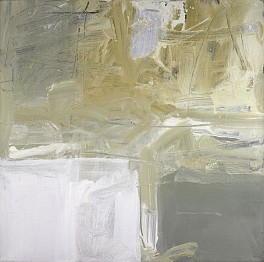
July 22, 2020 - Nicole Barylski for Hamptons.com
The New York Academy of Art is taking up a five-month residency at the Southampton Arts Center, where it will present 2020 Vision, a spectacular exhibition featuring over 60 artists and writers. Co-curated by Academy President David Kratz and Stephanie Roach of the FLAG Art Foundation, and edited by Emma Gilbey Keller, 2020 Vision will be on display from Saturday, July 25 through Sunday, December 27.
"The pain, loss and uncertainty of the ongoing COVID-19 pandemic. The awakening cry for social justice following the murders of George Floyd, Breonna Taylor, and Ahmaud Arbery and many others. The unnerving possibility of global recession. 2020 has already experienced seismic events that are shifting values and shaping our choices as citizens and as creators," Kratz and Roach noted. "Artists and writers are always the antennae of our society, all the more so at a time as challenging as this one. They have an opportunity—some might say, a duty—to interpret this moment and imagine the world not only as it is, but also as it could be."
2020 Vision will encompass visual artworks from art students and rising stars to contemporary icons, as well as a myriad of texts, such as poetry and essays, and video diaries.
"This is the guiding challenge of the group exhibition, 2020 Vision. We asked artists, writers, and creative thinkers to consider three questions of critical importance: Our lives will never be the same, but what will change look like? What do we want to keep as we rebuild? And what must we guard against?" they said.

July 22, 2020 - Berry Campbell
Christine Berry appointed as part of the Awards Committee for the New York Studio School 2020 Alumni Exhibition: Mercedes Matter Awards Announcement & Discussion
Read More >>July 20, 2020 - Jonathan Goodman for Whitehot Magazine of Contemporary Art
“In Between,” the title of Susan Vecsey’s show, refers both to the strange period of quarantine we currently find ourselves living in, as well as the double nature of the painter’s work, in which she floats an acquaintance with artists such as Mark Rothko and Helen Frankenthaler and their landscape-influenced abstractions with her own experience of non-objective art in response to the natural world (Vecsey lives part of the time in East Hampton). The work is subtle, deliberately beautiful, and historically cognizant of the New York School and its history during the past half-century, in particular the ongoing perceptions of a Color Field predilection. If one felt compelled to make a choice, it can be said that the works tend to lean in the direction of landscape; their simplicity makes them strong in an abstract sense, but we never lose the implication that we are close to land, to water, and to the sky. Individually, the paintings are attractive, but there is also a cumulative effect, in which the paintings work a sympathetic magic by creating a pastel-like mood and atmosphere, in which both the beauty of nature and also of art are handled with a notable measure and restraint.
The condition of being in between needs to be remarked upon; much of good painting today plays with the idea that an imagery can share aspects of stylistic genres that play off of difference in their essence. Yet it can be noted that nothing is purely abstract nor entirely figurative. Elements or parts of the painting can flow in and out of meanings that take on both styles. It is hard to see both approaches occurring in the same moment; we remember those visual paradoxes where, looked at one way, the image represents one kind of object; and then, when the mental intelligence shifts, another image comes into being--but both images cannot be processed at the same time. Perhaps Vecsey’s general achievement is to render a visual system that jumps from a particular manner of looking into another. While this process is not new--we have the extraordinary achievement of Rothko, mentioned above--its innate complexity and willingness to occupy different ways of seeing within the same composition make it wonderfully current, not to mention extraordinarily interesting as art.
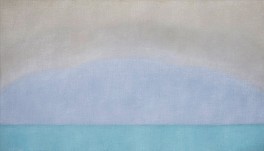
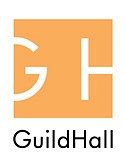
June 11, 2020 - Guild Hall

June 11, 2020 - Widewalls
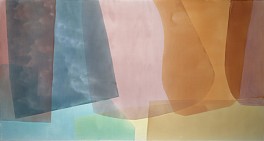
June 10, 2020 - Berry Campbell
In this video, Jill Nathanson gives a tour of her studio in Hoboken, New Jersey, featuring some of her paintings in progress.
Read More >>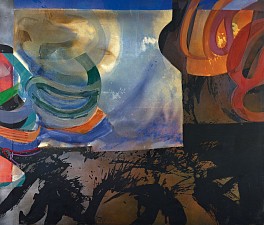
May 28, 2020 - Berry Campbell
PRESS RELEASE
FOR IMMEDIATE RELEASE
EXTENDED: SYD SOLOMON: CONCEALED AND REVEALED AT THE JOHN AND MABLE RINGLING MUSEUM OF ART
NEW YORK, NEW YORK, MAY 28, 2020—Berry Campbell is pleased to announce the extension of the Syd Solomon traveling museum exhibition, Syd Solomon: Concealed and Revealed. After opening at the Deland Museum, Florida in 2016, the retrospective traveled to the Greenville County Museum, South Carolina (2017), and then to Guild Hall Museum, East Hampton, New York (2018). The exhibition opened at its final venue, The John and Mable Ringling Museum of Art, Sarasota, Florida, in December of 2019. Shortly after a full-day symposium on Syd Solomon in February 2020, the museum temporarily closed due to COVID-19. The John and Mable Ringling Museum of Art reopened to the public on May 27, 2020 and will extend Syd Solomon: Concealed and Revealed and all associated programing through January 2021.
Syd Solomon: Concealed and Revealed consists of 45 paintings and works on paper sourced from public and private collections, including hundreds of original and never seen before archival photographs and documents from the Solomon Archive. These newly discovered materials detail how Syd Solomon's World War II camouflage designs and other early graphic arts skills were foundational to his unique approach to Abstract Expressionism. This new information makes this exhibition and accompanying catalogue a revelation by furthering the understanding of Syd Solomon’s life and work.
Syd Solomon served as camouflage expert in the United States Army during World War II (1941- 1945), which prevented him from taking part in the formative years of the Abstract Expressionist movement in New York. His camouflage designs were used during the Normandy invasion and in the African campaign and his camouflage instruction manuals where distributed throughout the US Army. Solomon's designs were shared with the English camouflage experts, many of whom were artists, including Barbara Hepworth, Roland Penrose, and Henry Moore. Syd Solomon was awarded five Bronze Stars for his service.
Solomon suffered frostbite in the Battle of the Bulge and was not able to live in cold climates, thus settling in Sarasota, Florida. Although he arrived to the Abstract Expressionist scene late because of the War, by 1959 his work had gained the admiration of Museum of Modern Art curators, Peter Selz and Dorothy C. Miller, the Whitney Museum of American Art's director, John Baur, and many others, including artists Philip Guston and James Brooks, who became life-long friends. At this time, Syd Solomon's paintings entered the collections of the Solomon R. Guggenheim Museum, the Whitney Museum of American Art, and over 100 additional museum collections.
This exhibition was co-curated by Mike Solomon, the artist’s son, and Ola Wlusek, the Keith D. and Linda L. Monda Curator of Modern Art and Contemporary Art, at the John and Mable Ringling Museum of Art, Sarasota, Florida.
Syd Solomon: Concealed and Revealed is accompanied by a 96-page hardcover catalogue with essays by Michael Auping (former Chief Curator at the Modern Art Museum of Fort Worth and curator of recent exhibitions of Frank Stella and Mark Bradford), Dr. Gail Levin (expert on Lee Krasner and Edward Hopper), George Bolge (Director of the Deland Museum of Art, Florida), and Mike Solomon, (artist and the artist’s son). This exhibition was organized by the Estate of Syd Solomon in conjunction with Berry Campbell, New York.
For museum hours of operation, please visit: www.Ringling.org. To visit the exhibition virtually, please visit: https://www.youtube.com/watch?v=0f1b8wRQhsw. To purchase the exhibition catalogue, please email: info@berrycampbell.com.
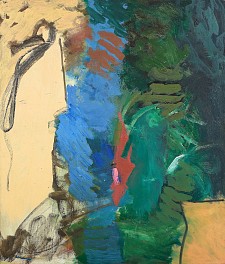
May 23, 2020 - Vittorio Colaizzi for Woman's Art Journal
Writing in 1981 of paintings made between 1955 and 1962, critic Theodore F. Wolff claimed that the work of Abstract Expressionist painter Yvonne Thomas (1913–2009) “reminds us that good painting is good painting regardless of the form it takes.”1 Wolff’s assertion must make the sober and disinterested scholar a little queasy, but it is typical, if somewhat strident, of criticism of Thomas’s work, in that it combines an appeal to quality with an acknowledgement of historical contingency. In this way it demonstrates the problem that Thomas’s work poses for educated viewers. Criticism of the last half century has tended to homogenize and dismiss gestural abstraction as an embodiment of inadvisably idealistic values, and as a foil to or baseline for the performative, sculptural, or photographic work that repudiated or grew from this kind of painting—consider for example the work of Carolee Schneemann (1939–2019). While painting itself currently enjoys wide and varied manifestations, and claims about Thomas’s sheer quality proliferate, a certain familiar aspect to her abstraction, as is evident in Summer Fantasy (1954; Pl. 1), was noticed in published criticism as early as 1956. This did not prevent Dore Ashton from attributing to her “genuinely fresh insights,” nor Donald Judd from excepting her from his nearuniversal condemnation of gestural abstraction with a positive review in 1960. 2
Born Yvonne Navello in Nice, France, in 1913, she moved to Boston with her family in 1926. She showed an interest and aptitude for art from an early age, and following studies at the Cooper Union began a career in commercial art in the 1930s. She married Leonard Thomas in 1938 (they lived in Newport, Rhode Island, during the war), and maintained close ties with the New York art world throughout her life (Fig. 1). She attended the Art Students League in 1940, and studied with Vaclav Vytacil. She also had private lessons with Dimitri Romanovsky (a Russian artist specializing in nudes and portraiture), and attended the Ozenfant School of Art. Nearly every published account of Thomas’s work mentions her participation in the innovative and short-lived painting workshop entitled “The Subjects of the Artists,” which ran from 1948 to 1949 and was initiated but abandoned by Clyfford Still and taken up by Mark Rothko, Robert Motherwell, William Baziotes, and David Hare. Barnett Newman joined in the second year. These sessions were an avenue for the five burgeoning Abstract Expressionists to share with an equal number of interested students, Thomas among them, their incipient methods of free painting, bidden by one’s inclinations in the face of the materials and presumably conditioned by the subconscious mind. Ten years later and throughout her life, this sense of freedom remained in her paintings and works on paper, as a small but expansive gouache shows (Fig. 2; 1959).The aim, as Robert Hobbs and Barbara Cavaliere have shown in their landmark 1977 article, “Against a Newer Laocoon,” was to allow a less literary, less illustrative surrealism to take root. 3
In 1950 she enrolled in one of Hans Hofmann’s summer classes, and in the next decade was included in group exhibitions of artists identified with Abstract Expressionism, including those at New York’s Stable Gallery, from 1953 to 1957. The—only relative—belatedness with which Thomas came to Abstract Expressionism, the stylistic variety she pursued, and the nuanced and revealing critical account that exists, together resonate with contemporary concerns about painting’s viability that are rooted in midcentury abstraction and its reception. Continue Reading